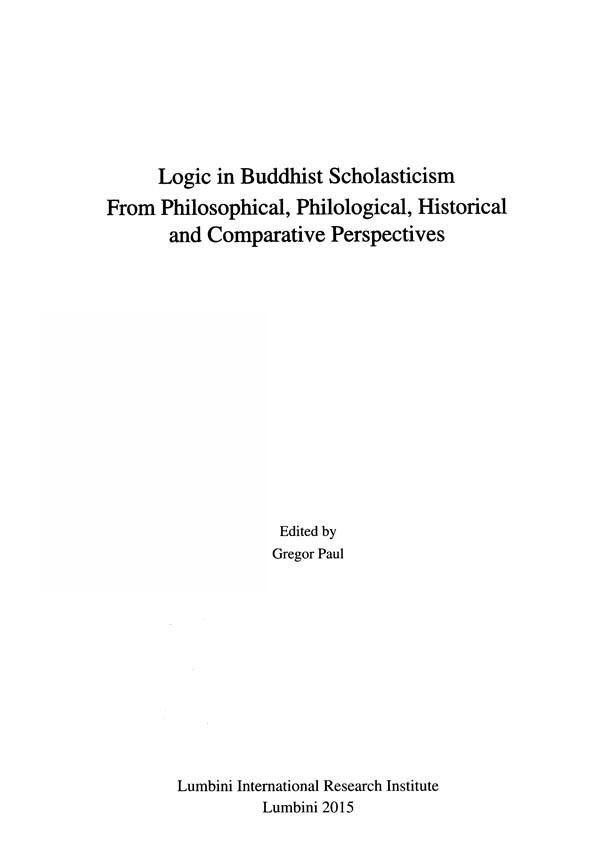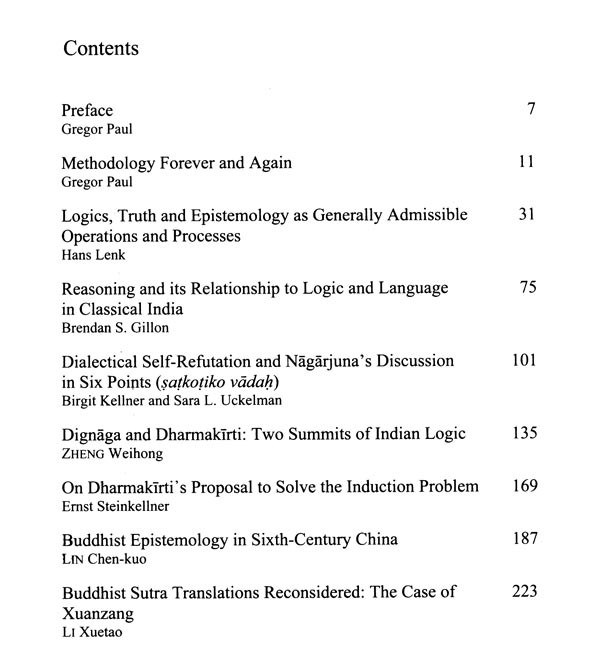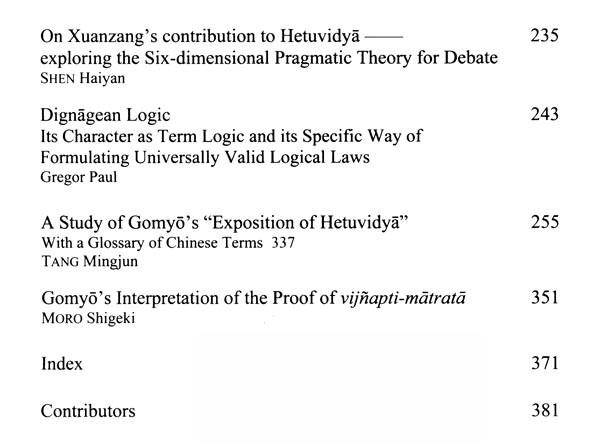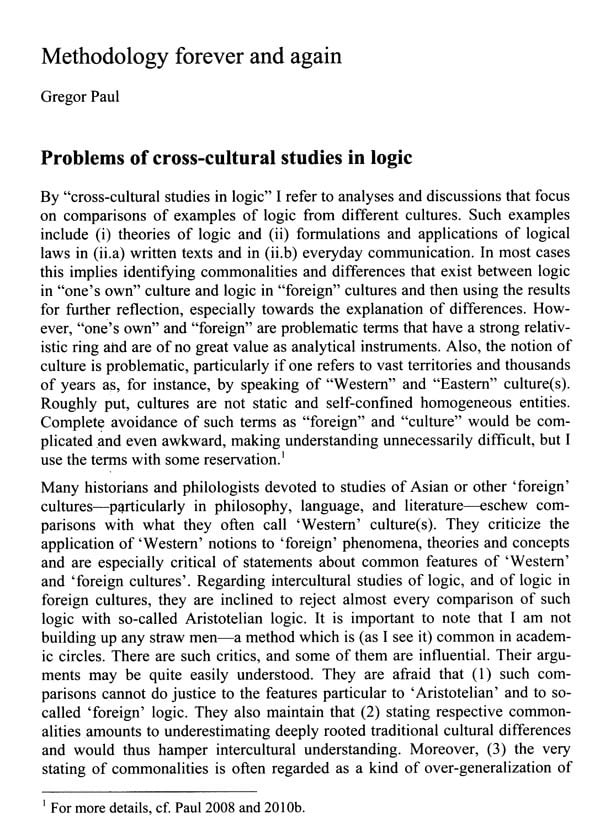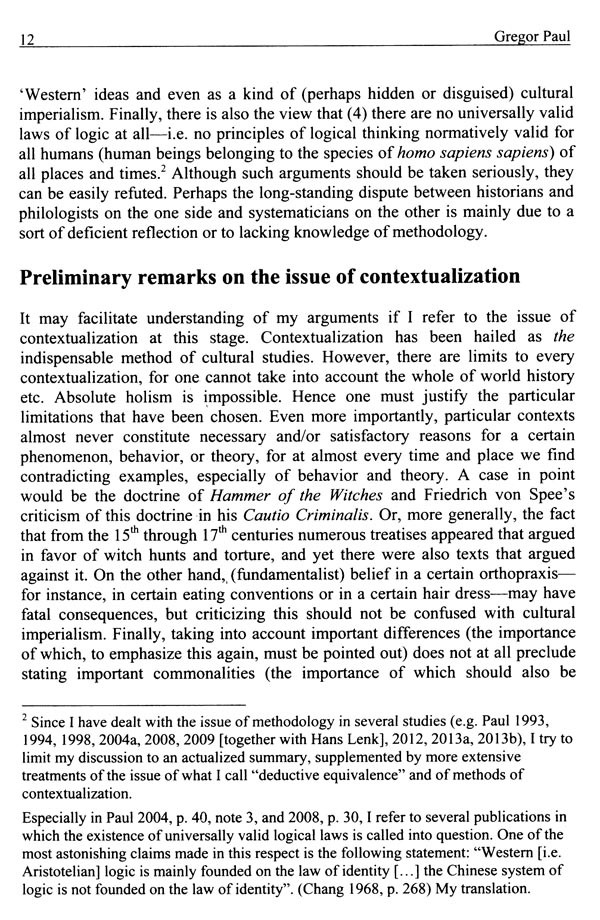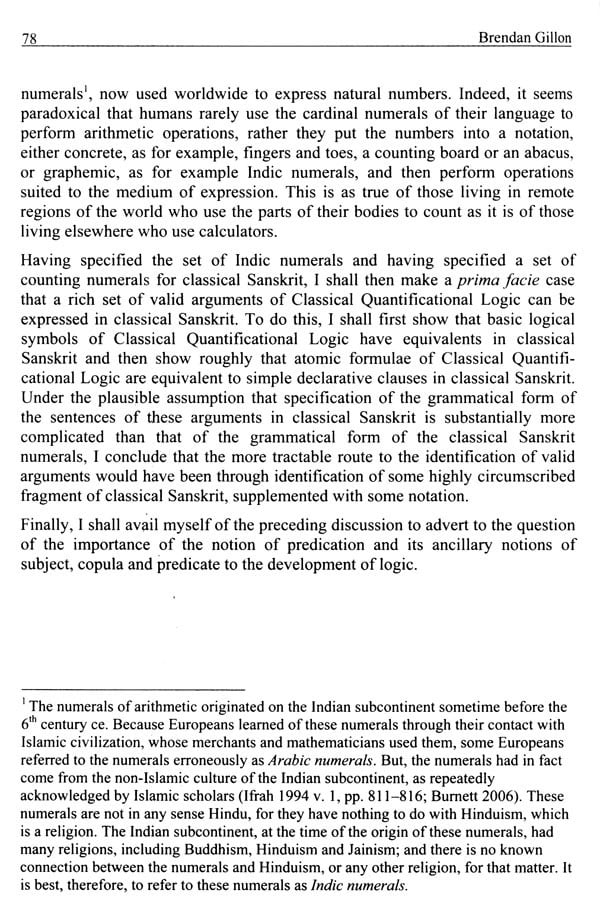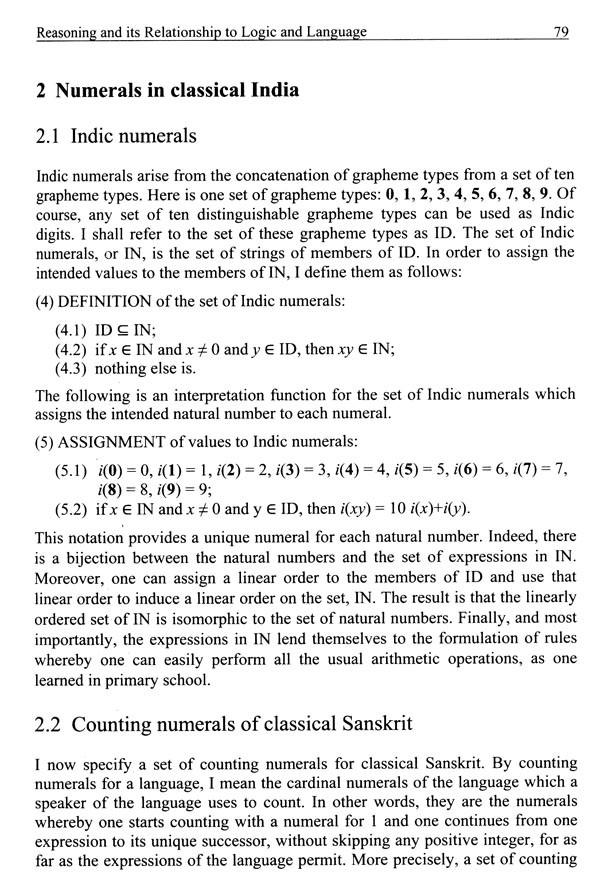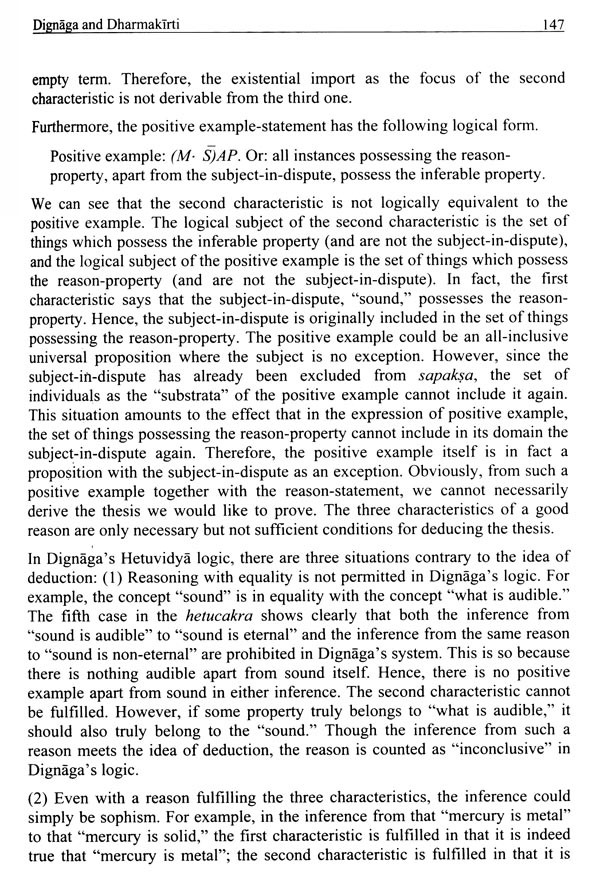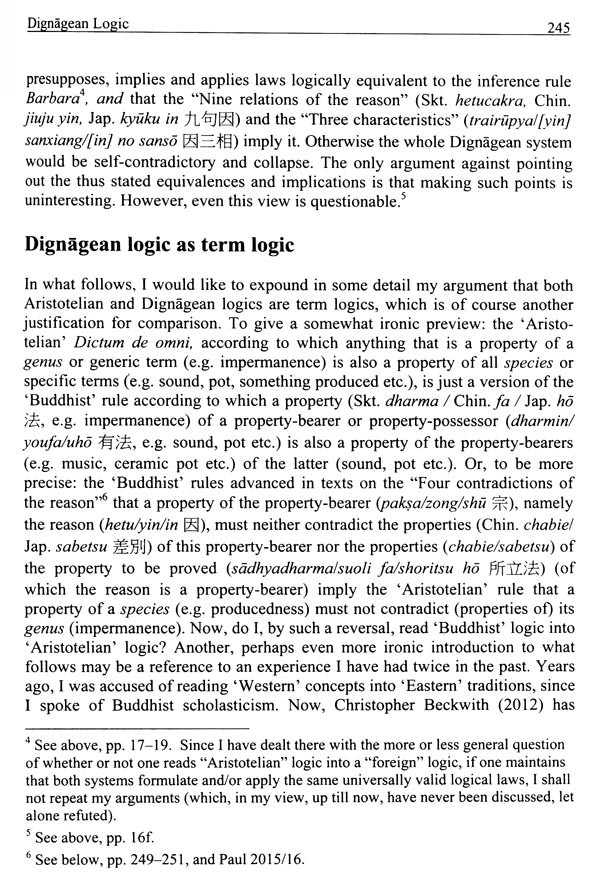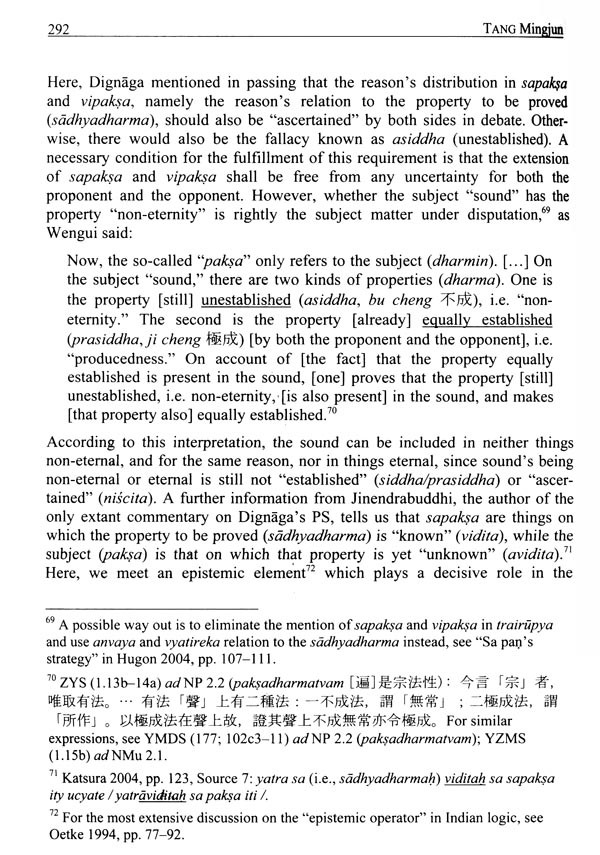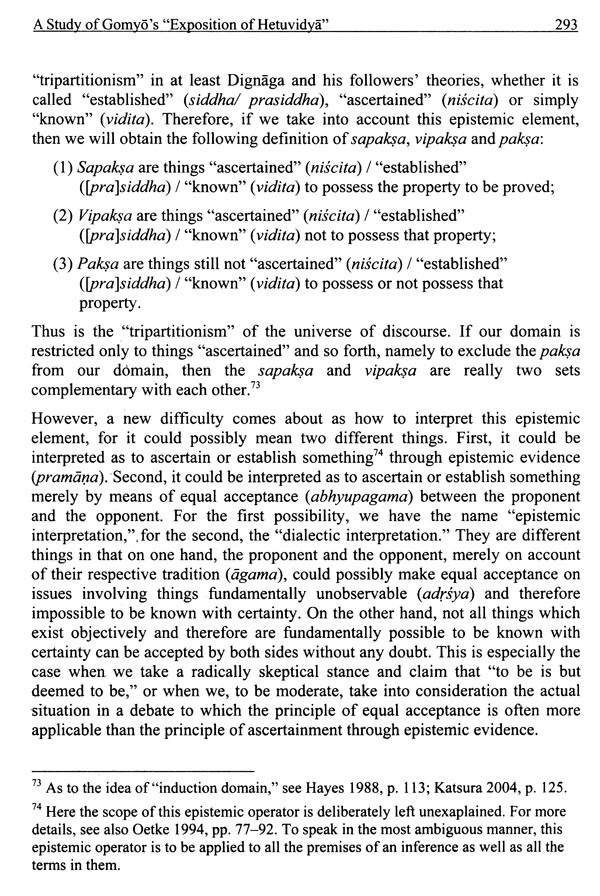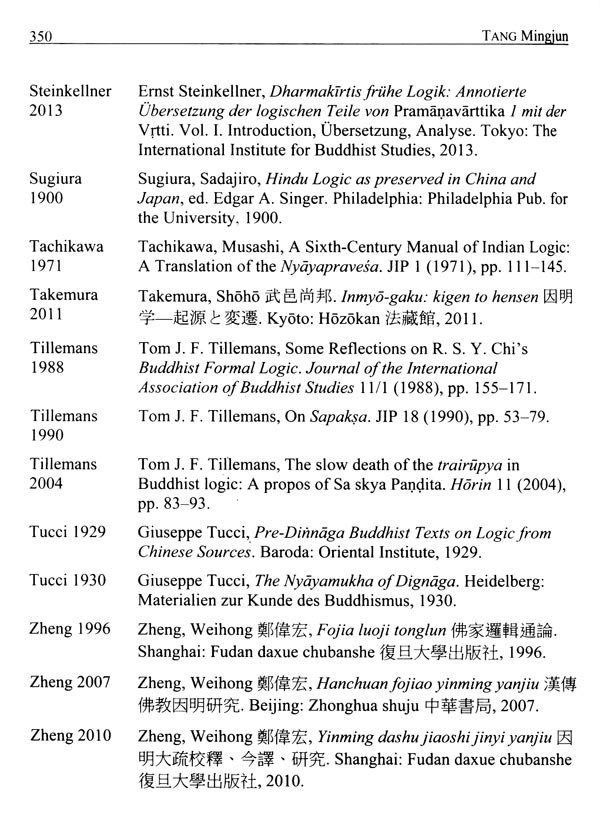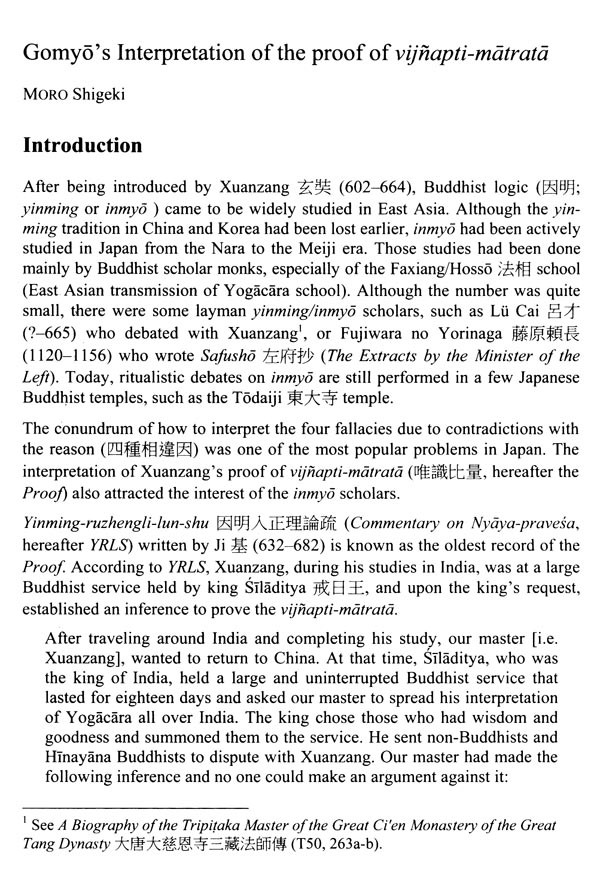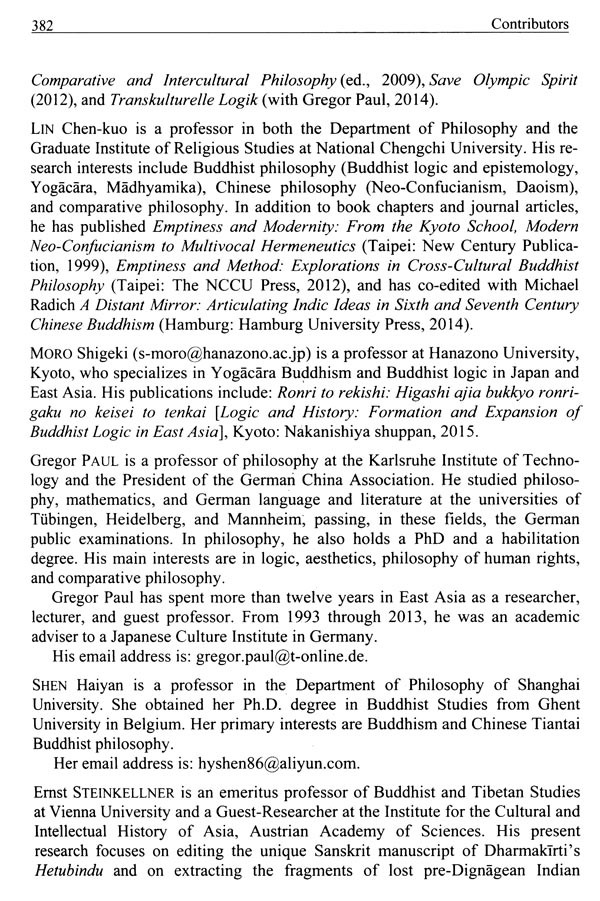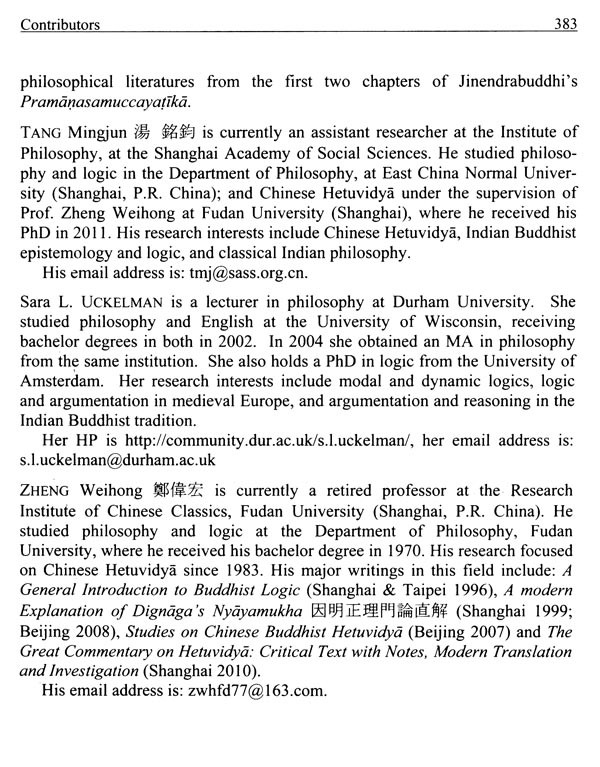About the Book The cover-diagram shows the tradition of the Buddhist "Dharma Character School" (Chin Faxiang zong, Jap. Hosso-shu), as seen by the Japanese temple Kofuku-ji in Nara. In this school, studies of logic, especially questions of non-contradiction and valid inference, played an important role. These studies were part of the "Science of Reason" (Skt hetuvidyl, Chin. yinming, Jap. immyo), a Buddhist discipline that originated in India and later spread to Sino-Asia. After his return from India, where he had travelled extensively, the great scholar-monk Xuanzang (600-664) introduced it to China, and Korean and Japanese scholar-monks, who studied with him in Chang'an, then brought it to their own countries. The first four names marked in the diagram refer to the Indian scholars Asanga (4 century), Vasubandhu (4th century), Dignaga (c. 480-540) and Sankarasvämin (-500-). Marked further down are the names of the Chinese scholars Xuanzang and Kuiji (632-682), and of the famous Japanese logicians Zenju (723-797) and Gomyo (750-834). All these scholastics, along with other Buddhist logicians who did not belong to the Dharma Character School, are dealt with in this book. Their theories are discussed from meta-logical and trans-cultural points of view; thus the discussions include com parisons of Buddhist notions of logic put forward in India, Tibet and East Asia with, for example, Greek, medieval European and Islamic notions of logic. Focusing on logic, one of the main aims of this book is to contribute to a more comprehensive and less one-sided picture of Buddhism, which is among the general public in the "West" often reduced to Zen and Tibetan Buddhism. Actually, in Buddhist history several thousands of pages were written on how to avoid logical contradictions and on how to generate logically valid inferences.
The contributors include well known Buddhologists and logicians from Austria, Canada, China, Germany, Japan, Taiwan and the United States.
About the Book As the title indicates, Logic Buddhist Philological, Historical and Comparative Perspectives focuses theories logic developed Buddhist scholastics. These theories are mainly part of keturvidya (Chin, yinming. Jap. inmyo), "Science reason", compre hensive discipline that besides logic includes such fields epistemology, ontol ogy, and methodology disputation. The most important Buddhist logicians are dealt in this volume the 'Indians' Dignaga 480 Sankarasvamin 7 century) and Dharmakirti (6 and 7 century), the c. 540), Chinese Xuanzang 2 (600-664) and Kuiji (632-682) and the Japanese Gomy (750-834)). However, Nagarjuna (2 and century) is also included. Though did not formulate theory reason, his treatises display conscious and sophisticated application of logical rules. Moreover, his treatises executed great influence the development the concept of logic as put forward the Science of reason. Besides Indian, Chinese, and Japanese scholastics, some Tibetan and Korean Buddhists are also referred to. The main issues discussed the contributions are the following ones:
(1) Which methods should be applied studies so-called non-Western logic? How can one avoid reading 'Western' notions into 'Eastern' texts? How important contextualization? (Kellner/Uckelman, Lenk, Paul) Are there universally valid logical laws? I.e. laws which are valid for all members the species homo sapiens? (Lenk, Paul)
If there are such laws, what would this mean for interpreting or re-constructing 'non-Western' logic? (Paul)
(4) What about the relation between language and logic, especially Greek, Sanskrit and Chinese the one hand and Aristotelian logic and logic in Buddhist scholasticism the other? (Lenk, Gillon) What are the specific features of Nagarjuna's disputation method(s)? And how are these features be described and evaluated from e.g. meta-logical points of view?
What the relation between Dignägean and Dharmakirtean logic(s)?
(Steinkellner, ZHENG, TANG) Does the logic in early Chinese Buddhist texts, yinming and inmyo differ significantly from the logic in hetuvidya? If so, in which respects do they differ and why? And which sense are the differences relevant? (LIN, LI, ZHENG, Paul, TANG)
**Contents and Sample Pages**
